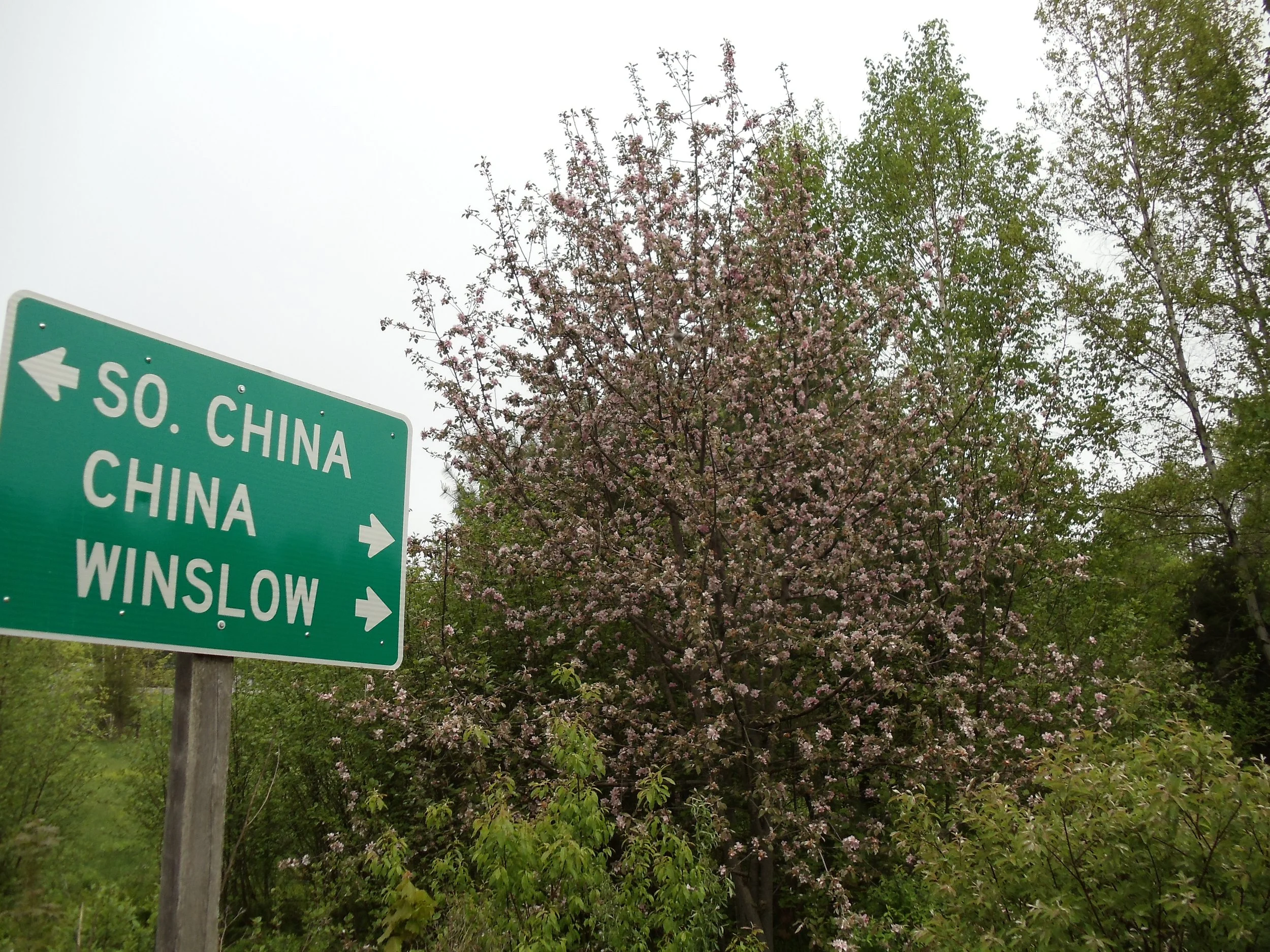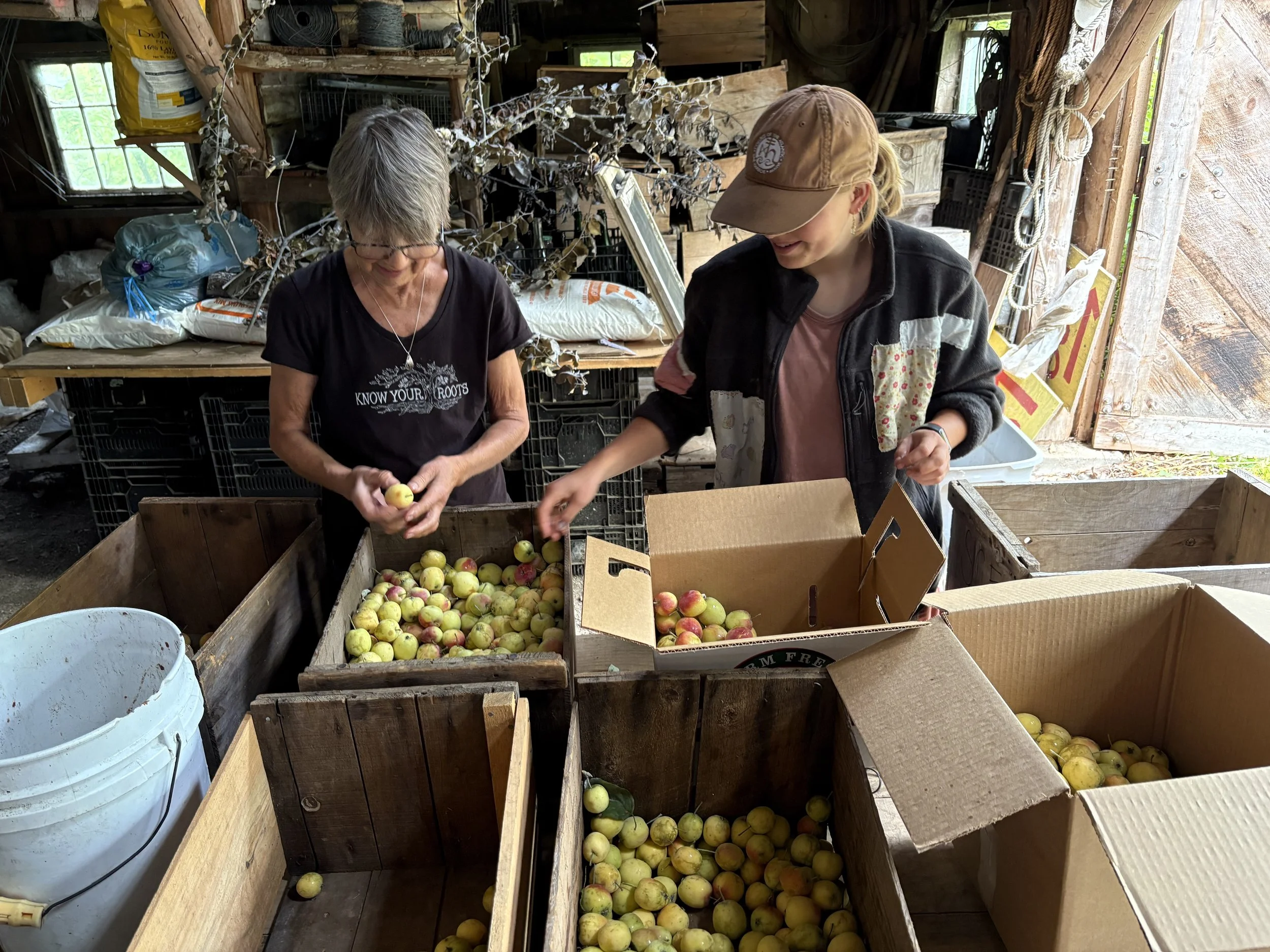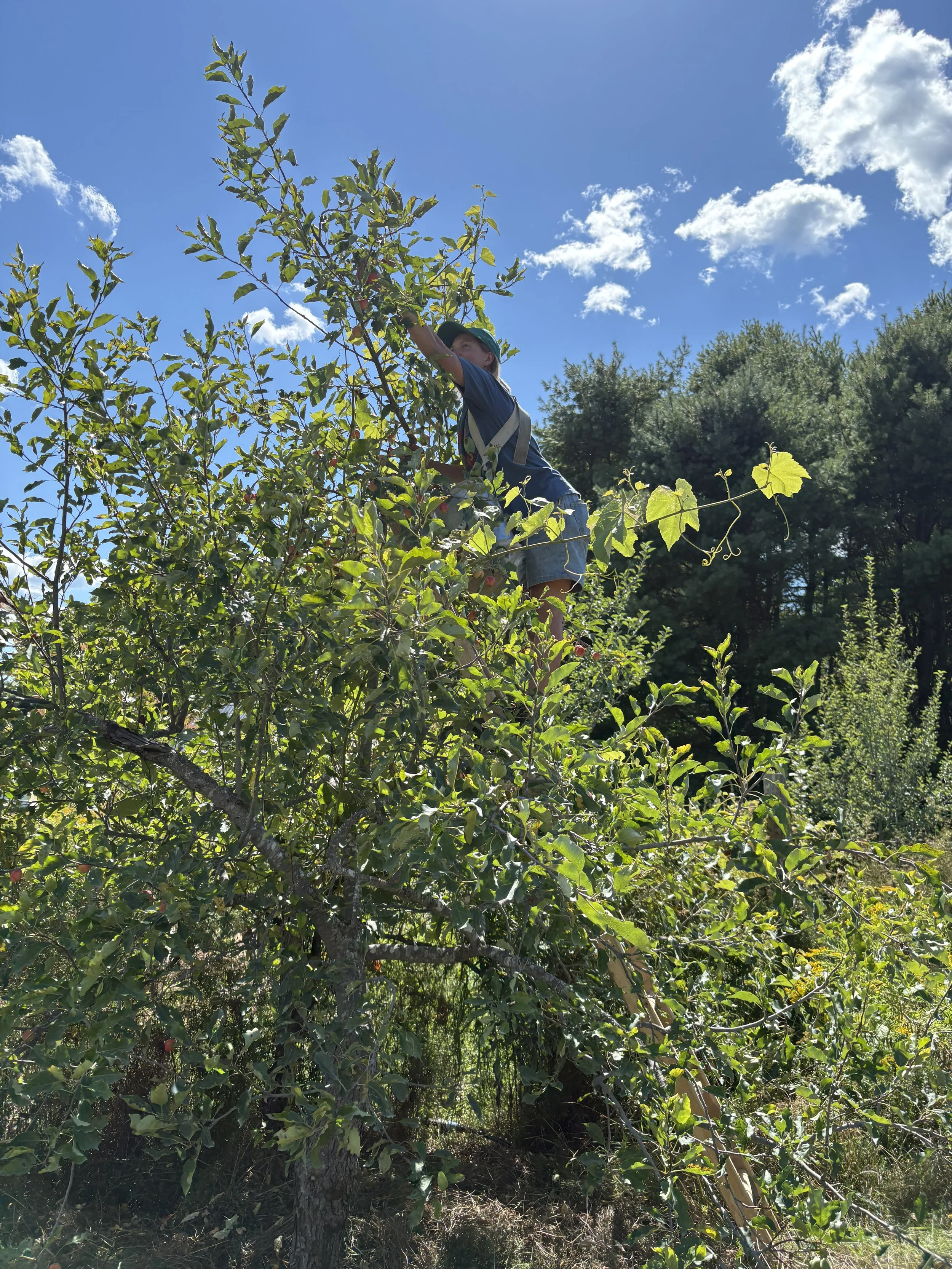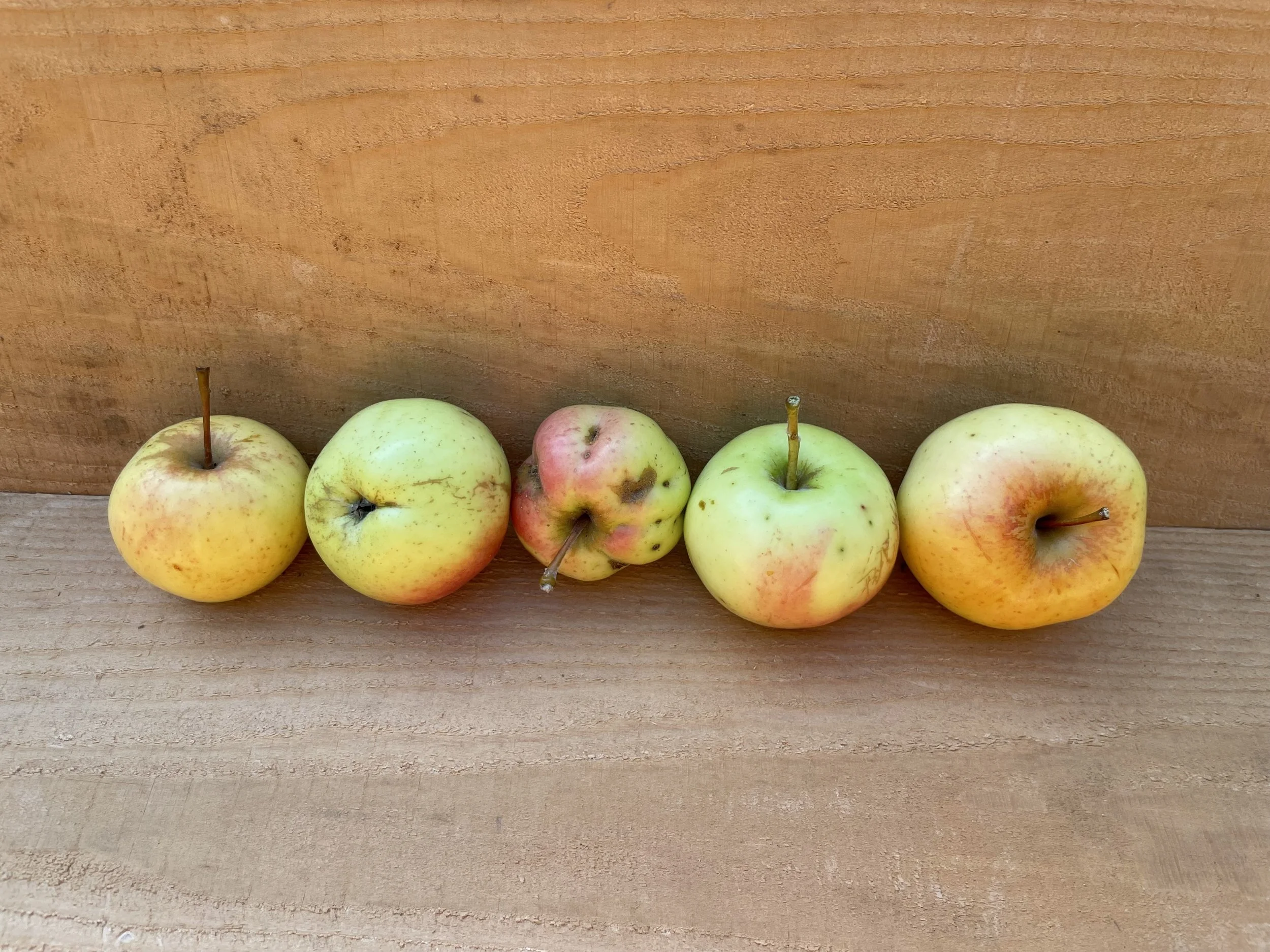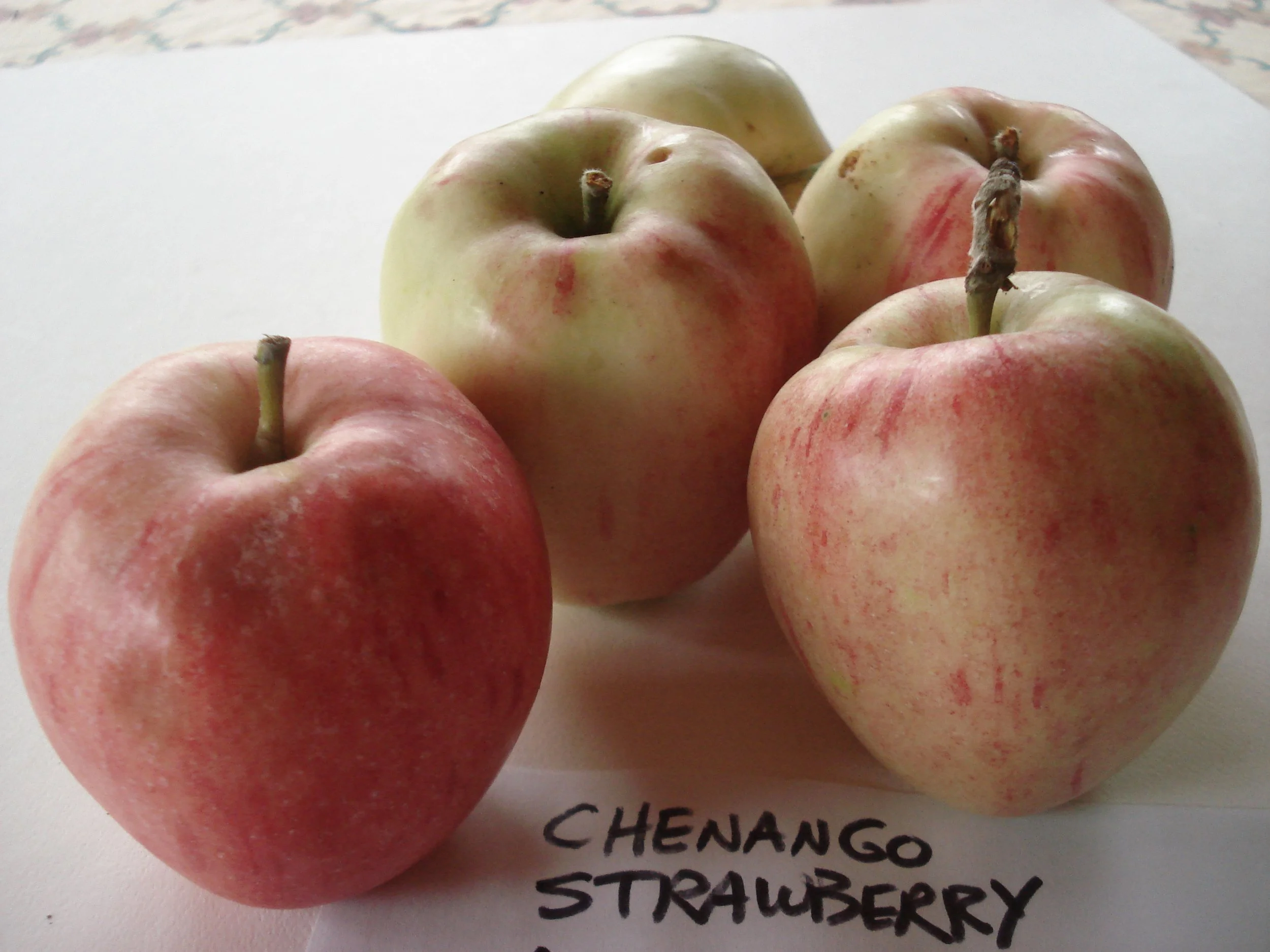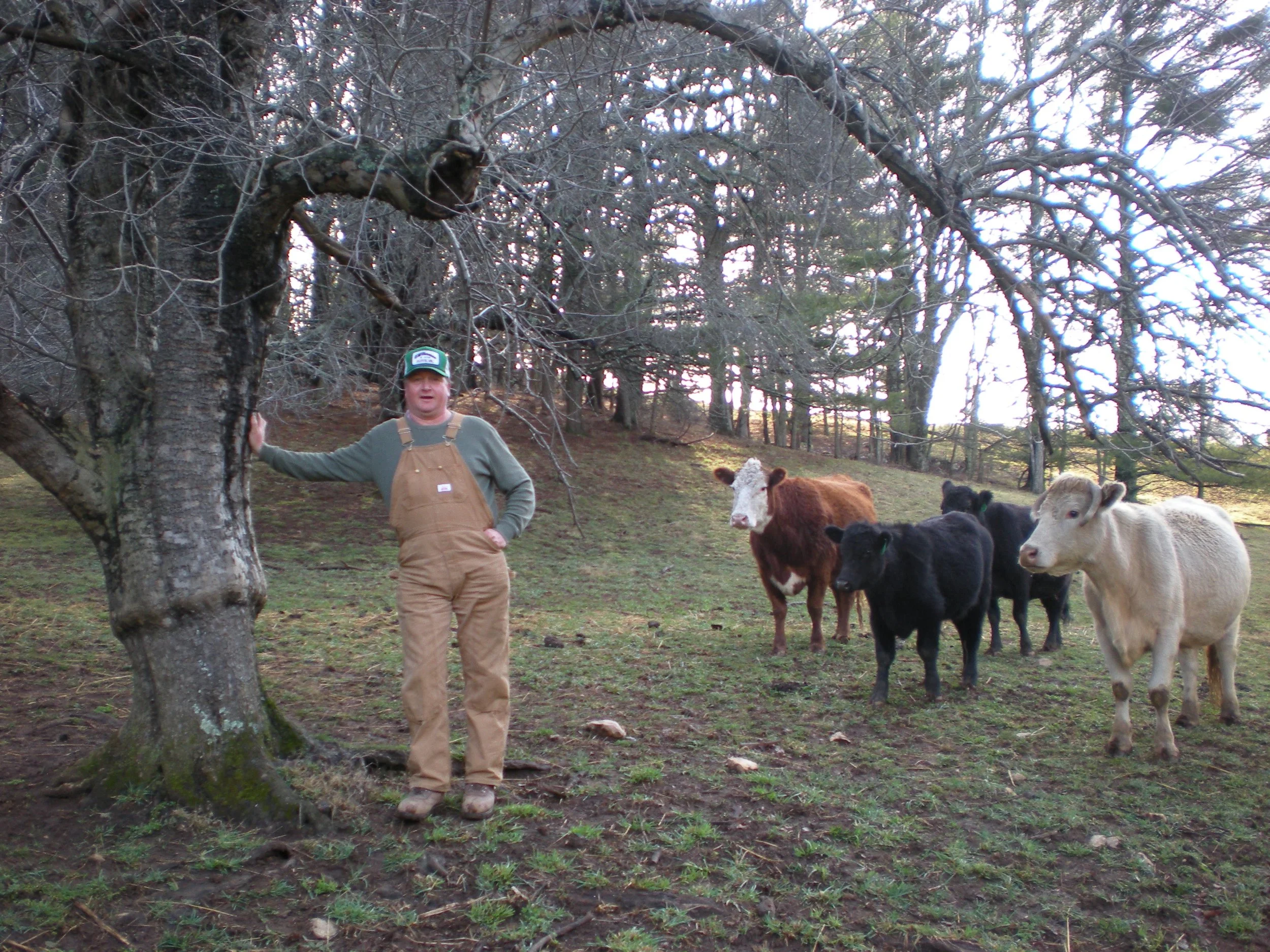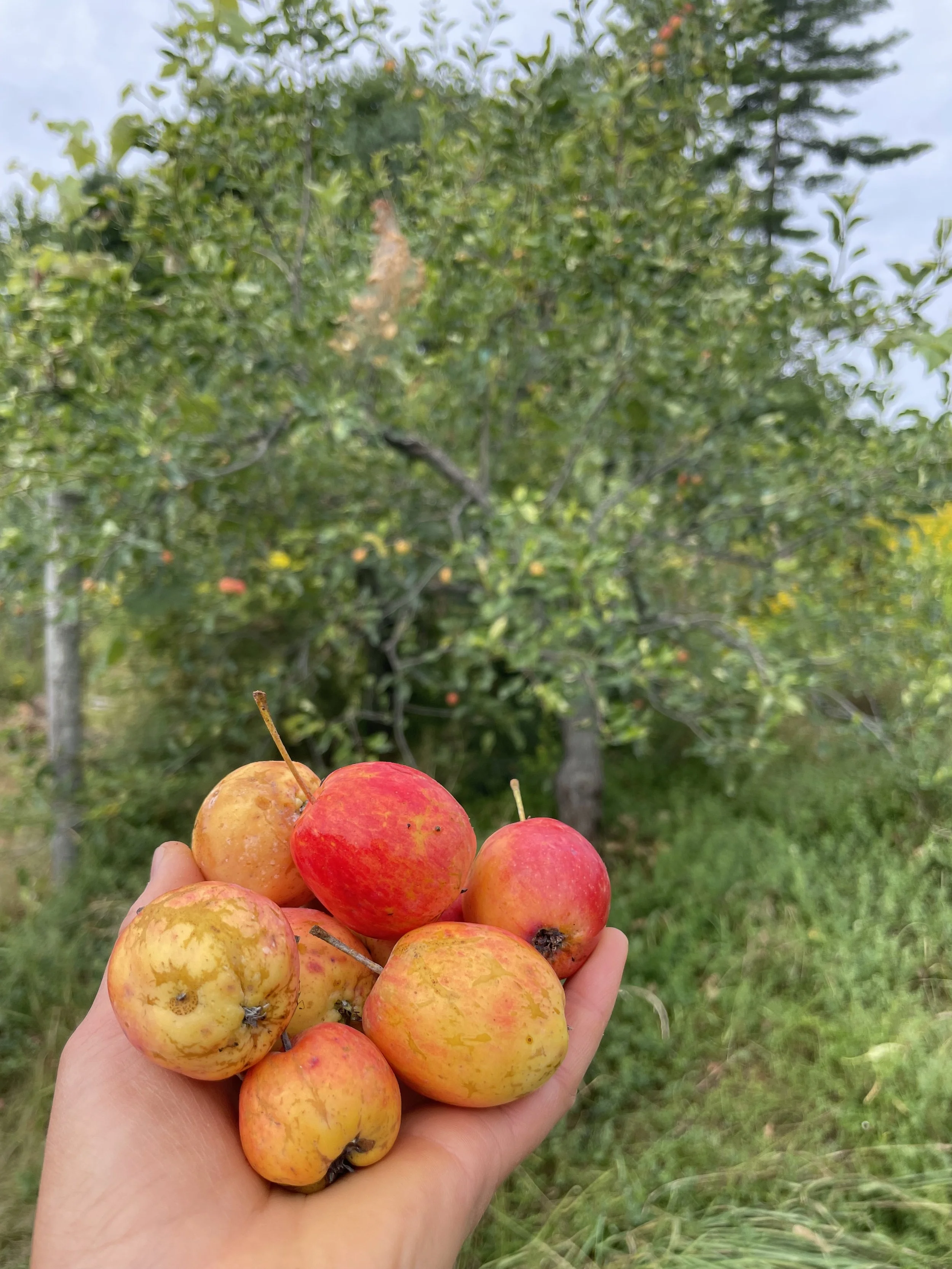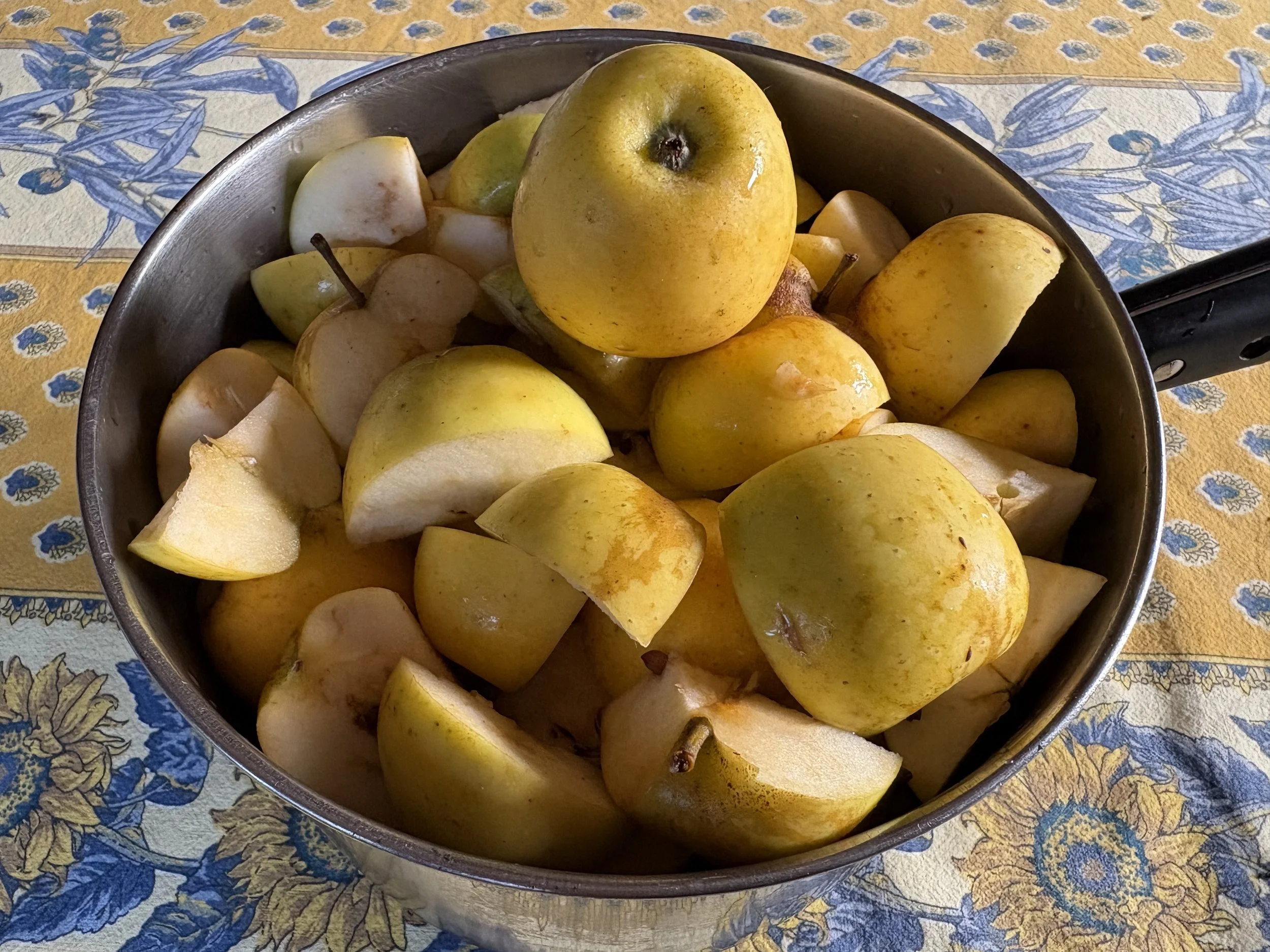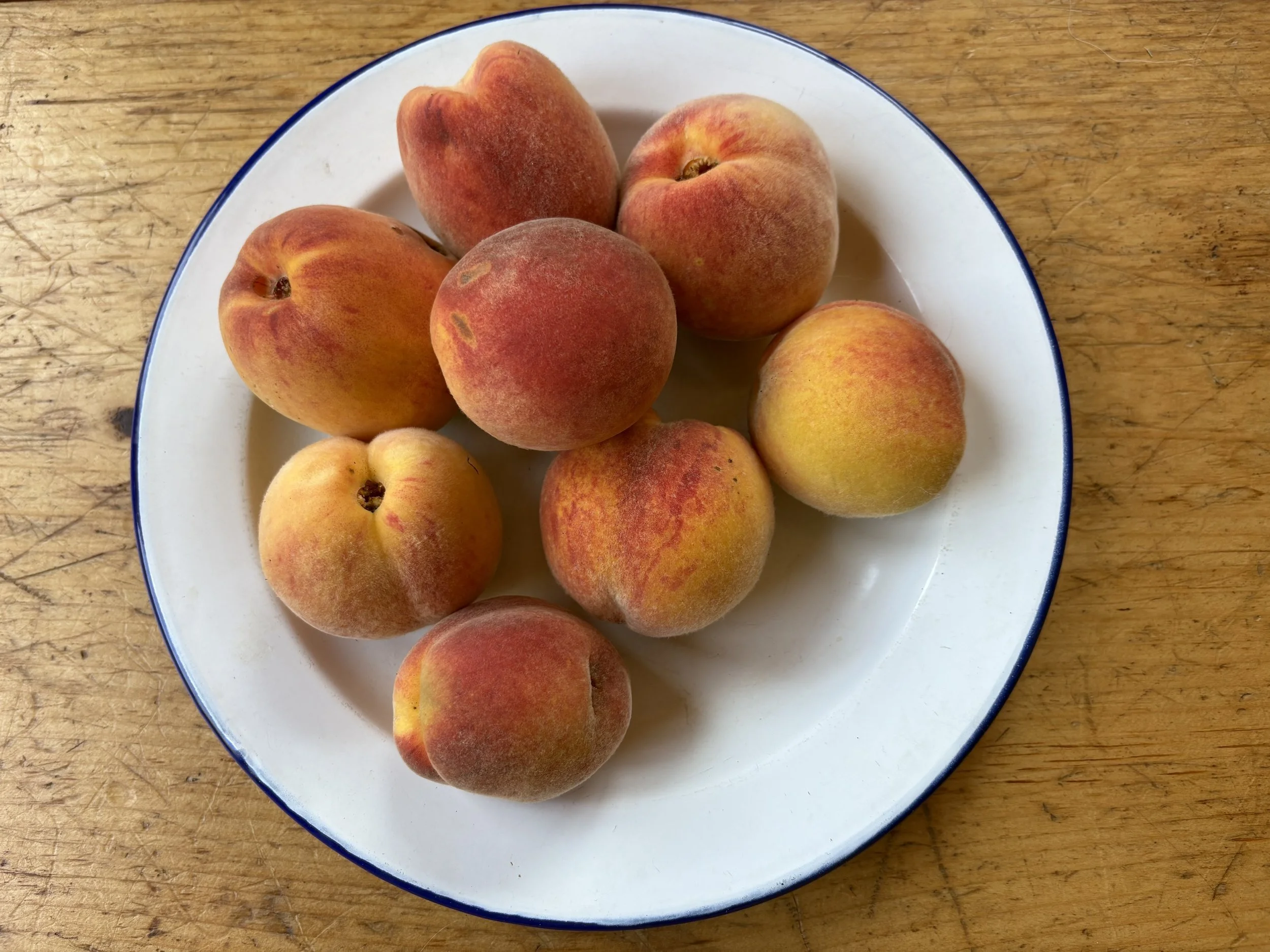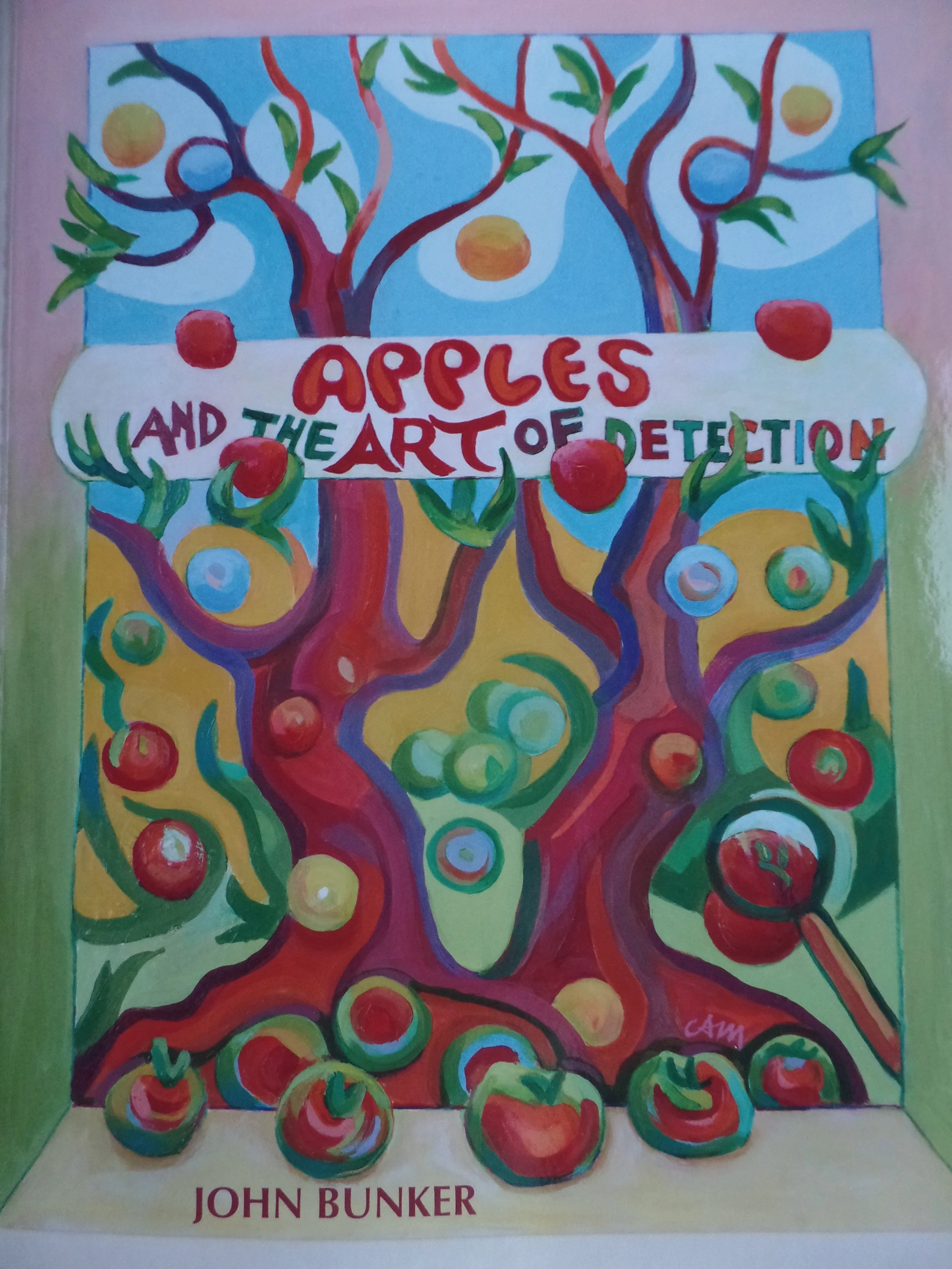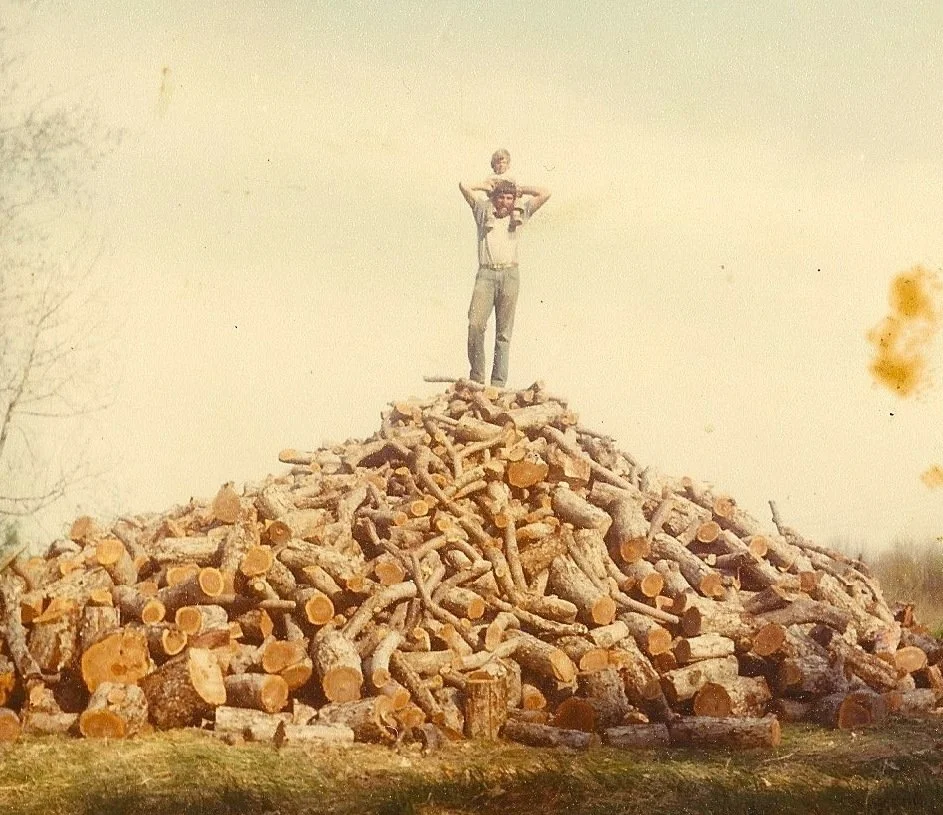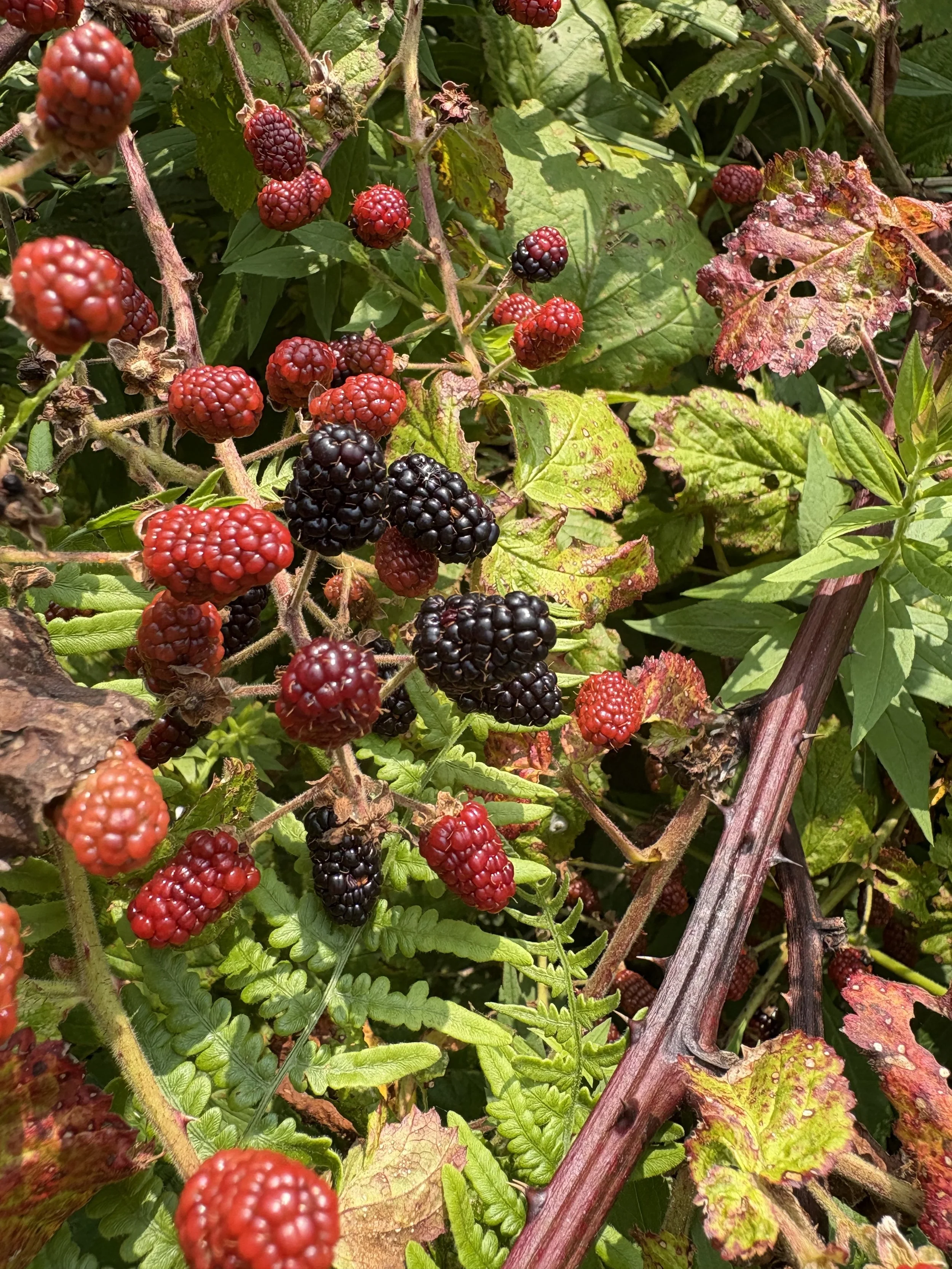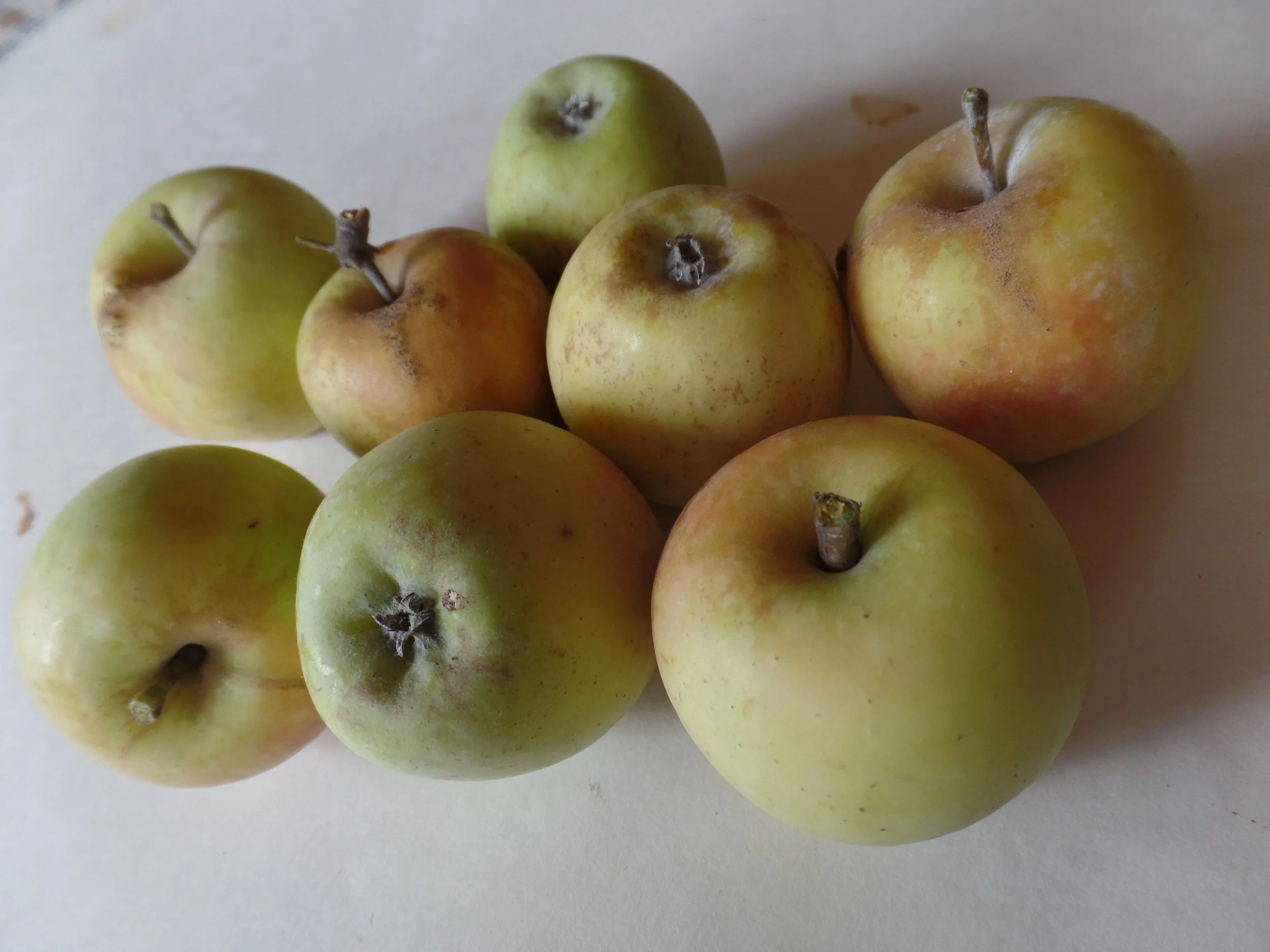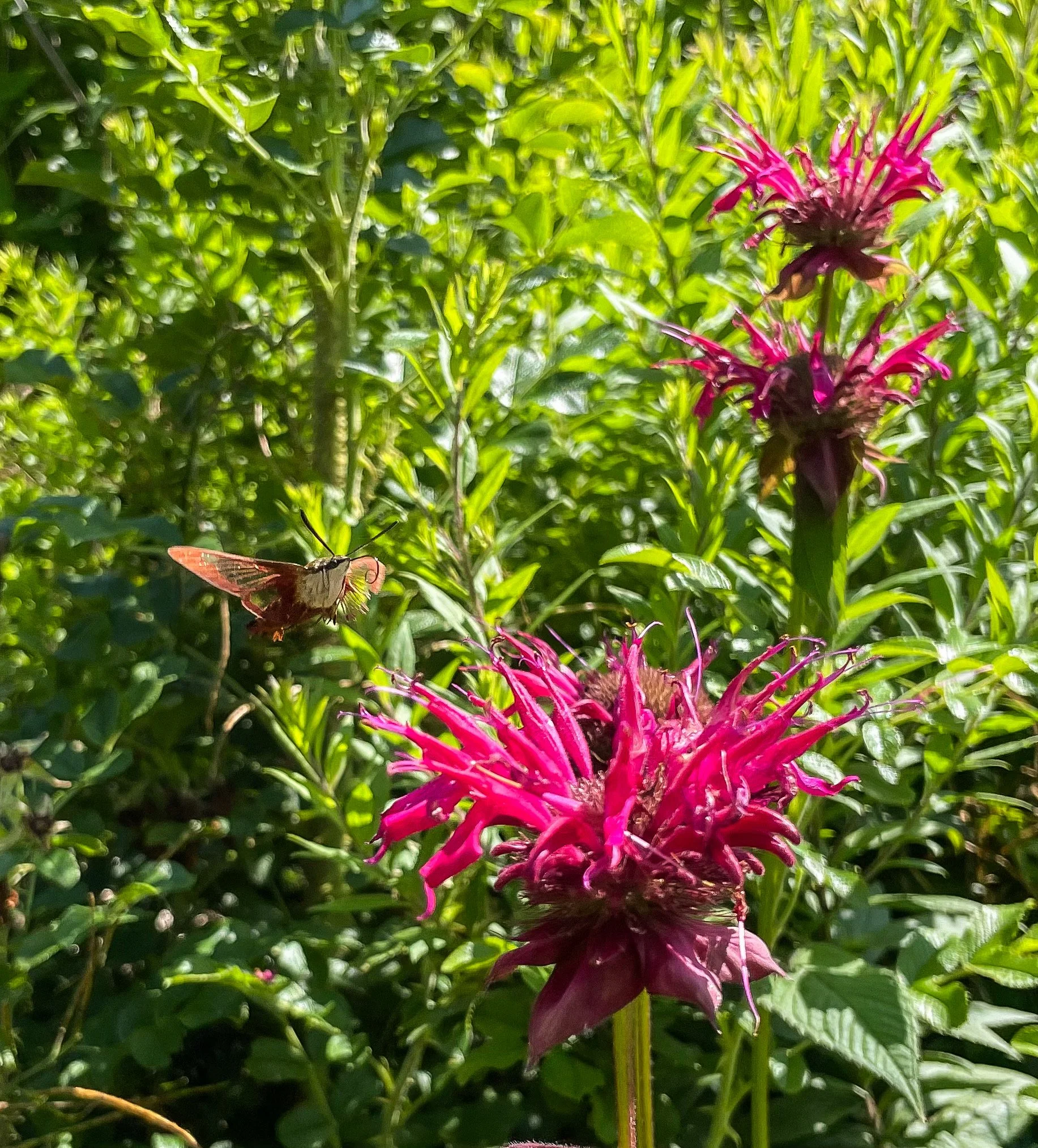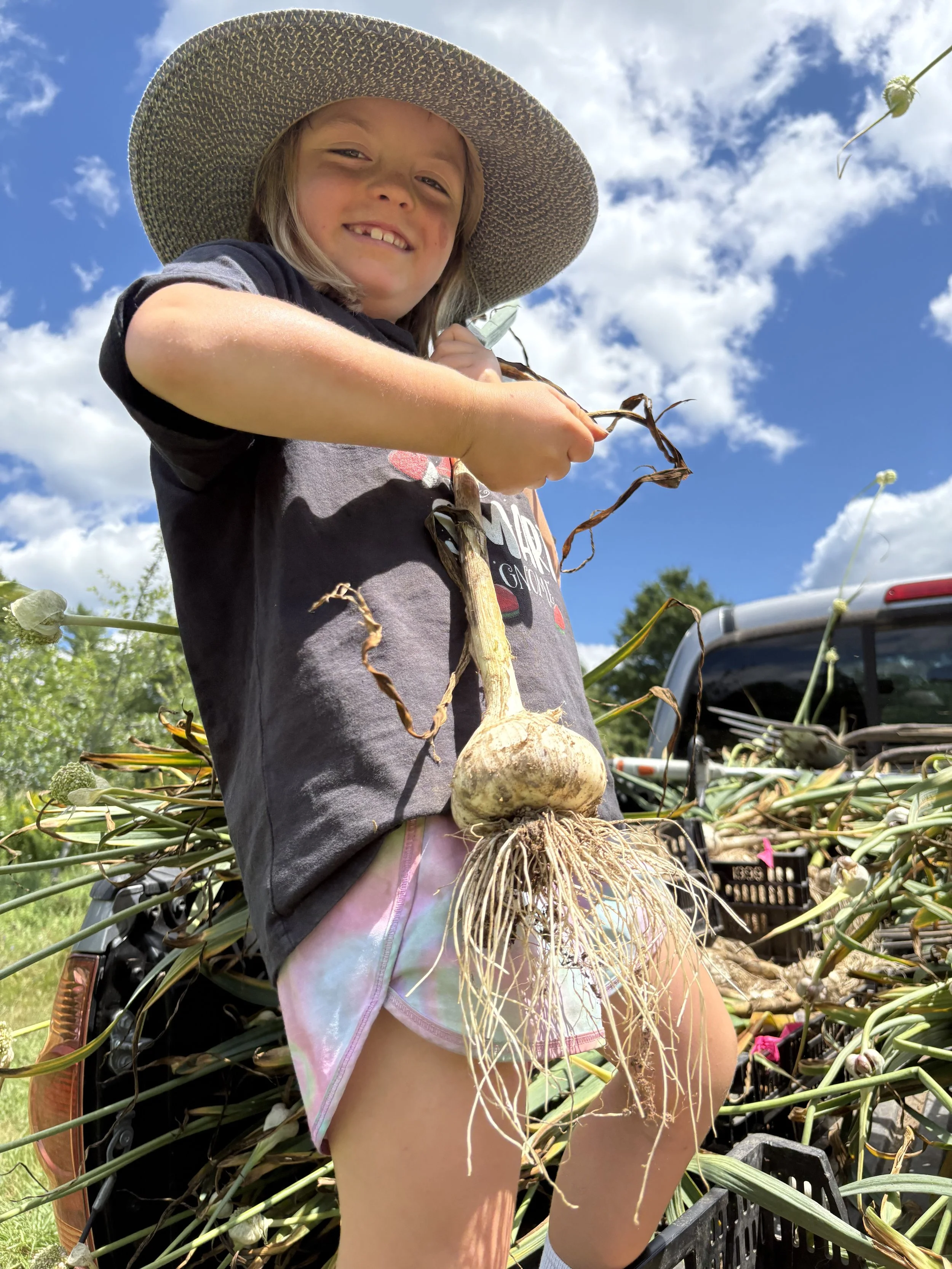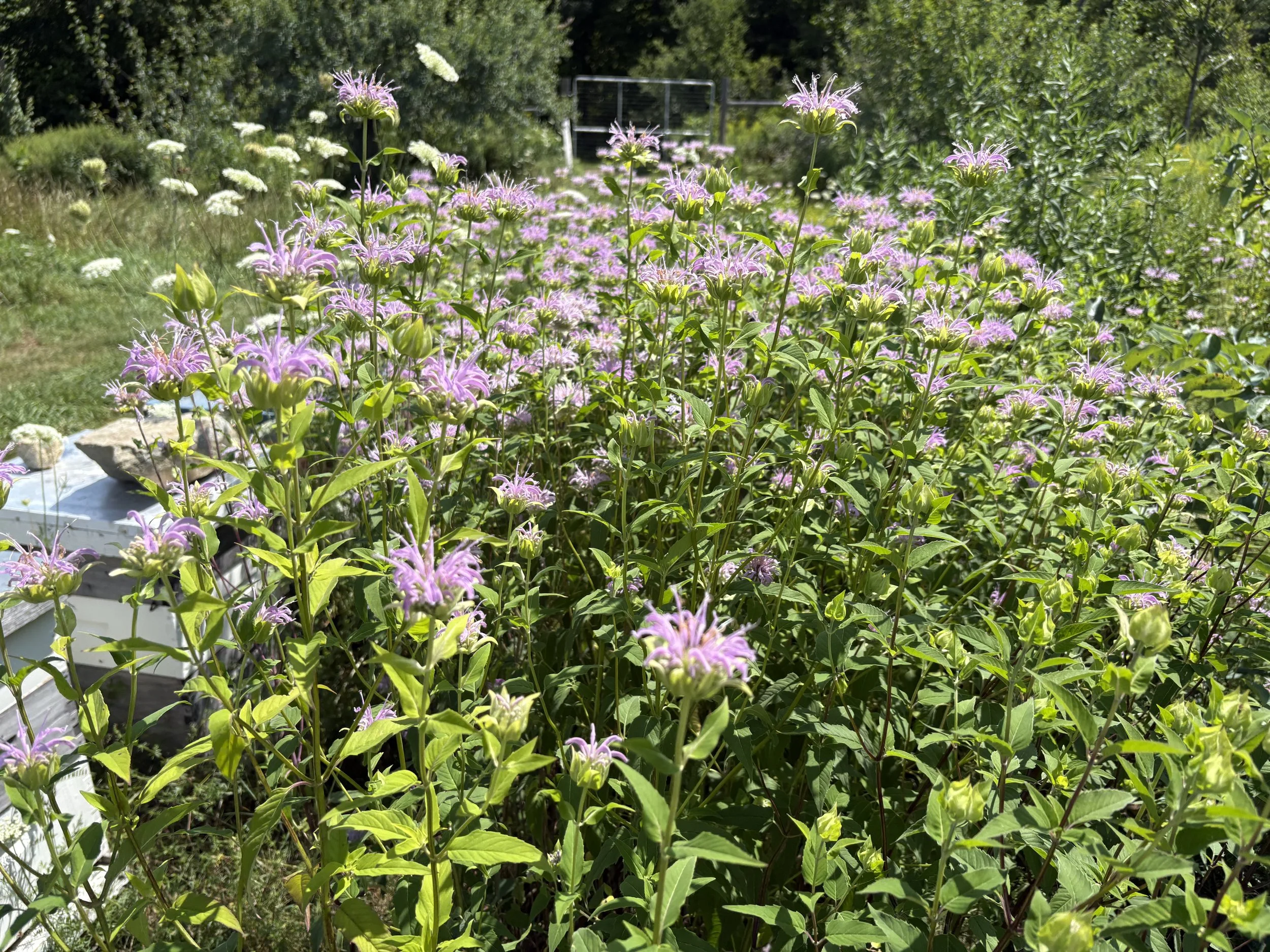Today in the orchard
Today Skylar built her first compost pile from scratch. This is a major achievement, a rite of passage and no easy feat. Her pile looks good so far, and I’m a real stickler when it comes to compost piles. (For more information on compost piles see the Orchard Reports on 6-16-24, 8-9-24 and 6-16-25.) We did more nursery weeding and watering as the drought trudges on. Meanwhile, the apples miraculously continue to ripen ,and we’re picking new varieties daily. Today it was Red China.
The original Red China tree that was cut down to make a driveway.
I have always thought Red China was a seedling tree. I discovered it one spring growing by the side of Alder Park Road about ten miles from here in China, ME. I first noticed it’s spectacular dark pink flowers. As I suspected the flesh is red too (get it?). The skin is a beautiful orangey-red-pink. It’s not a dessert (fresh eating) apple although some people may like it that way. It does cook-up well into an outrageous, raspberry-colored sauce. We had Red China DNA profiled, and the results came back as the same as another named red-fleshed cultivar. (I’m skeptical.) I don’t think that they’re the same, but the original “Red China” is now gone so we’ll likely never know if it was a seedling or a grafted tree. Fortunately we have two trees grafted here on the farm. If you’re into red-fleshed apples, scour your roadsides during bloom, looking for red/pink-flowering apples. You will have found a red-fleshed seedling.

